In the depths of Greek mythology lies the captivating tale of Persephone, the enigmatic Queen of the Underworld. This timeless story, filled with twists and turns, explores the abduction of Persephone and her subsequent transformation into a powerful figure. From her role as the goddess of seasons to her association with the cycle of life and death, Persephone’s symbolism and importance are interwoven into the fabric of Greek culture. In this article, we delve into the myth of Persephone, her role in Greek mythology, and her presence in art and literature, shedding light on the fascinating aspects of this intriguing and influential figure.
Contents
- The Myth of Persephone
- Persephone’s Symbolism and Importance
- The Role of Persephone in Greek Mythology
- Persephone in Art and Literature
- Conclusion
-
Frequently Asked Questions
- 1. What is the significance of Persephone’s abduction in Greek mythology?
- 2. How did Persephone adapt to her life in the Underworld?
- 3. What is the connection between Persephone and the cycle of life and death?
- 4. How is Persephone depicted in ancient artworks?
- 5. What is the story behind Persephone’s relationship with Hades?
- 6. How does Persephone’s role as the goddess of seasons affect the natural world?
- 7. Is there any historical evidence of Persephone worship?
- 8. Are there any other versions of the Persephone myth?
- 9. How does the myth of Persephone relate to the concept of rebirth and transformation?
- 10. How does Persephone’s story inspire modern interpretations?
- References
-
Frequently Asked Questions
- 1. Who is Persephone in Greek mythology?
- 2. What is the myth of Persephone?
- 3. How was Persephone abducted?
- 4. What happened to Persephone in the Underworld?
- 5. What is the connection between Persephone and the seasons?
- 6. How is Persephone associated with rebirth and transformation?
- 7. What is the significance of Persephone’s role as the Queen of the Underworld?
- 8. How is Persephone depicted in art and literature?
- 9. What other gods and goddesses are associated with Persephone?
- 10. What lessons can be learned from the myth of Persephone?
- References
- Read More
The Myth of Persephone
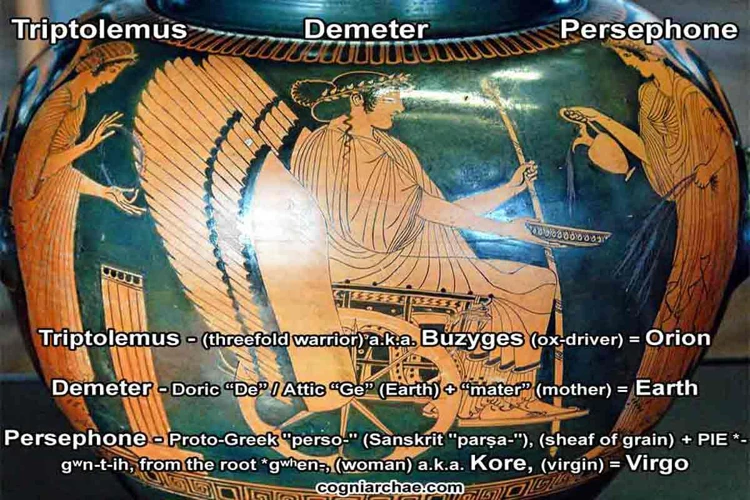
The myth of Persephone is a captivating tale that has been passed down through generations in Greek mythology. It revolves around the abduction of Persephone, a beautiful and innocent goddess, by Hades, the ruler of the Underworld. This act leads to Persephone’s transformation into the Queen of the Underworld, forever changing her fate. The story explores the sorrow and longing of her mother, Demeter, the goddess of harvest, who pleads for her daughter’s return. As the myth unravels, we witness Persephone’s resilience and adaptation to her new life in the Underworld, her connection to the cycle of life and death, and the eventual resolution that allows her to spend part of the year with her mother. This myth not only tells a fascinating story but also reveals profound insights into themes of power, transformation, and the eternal cycle of nature and life.
1. The Abduction
In the myth of Persephone, the abduction stands as a pivotal moment in shaping the destiny of the young goddess. As the daughter of Demeter, the goddess of harvest, Persephone exudes grace and beauty. However, her radiant allure catches the attention of Hades, the powerful god of the Underworld. One day, while Persephone is innocently picking flowers in a meadow, Hades, driven by desire, emerges from the depths of the earth and seizes her with an iron grip. In the blink of an eye, he whisks Persephone away to his underworld realm, where darkness and despair reign. This act of abduction sets in motion a chain of events that plunges the world into a state of sorrow and barrenness, as Demeter mourns the loss of her beloved daughter. The abduction symbolizes the forcible separation and the loss of innocence, highlighting the vulnerability of mortals and the power dynamics at play among the gods. It serves as the catalyst for Persephone’s transformation from a carefree goddess to the eventual queen of the Underworld, forever altering the course of her life and the world around her.
2. Life in the Underworld
Life in the Underworld, as experienced by Persephone, was a stark departure from her previous existence in the realm of the living. As the Queen of the Underworld, she ruled alongside her husband Hades, overseeing the souls of the deceased. Imprisoned by the eternal darkness, Persephone found herself in an environment devoid of light and life. The Underworld was a desolate place, filled with gloomy landscapes and echoing cries of the lost souls. However, Persephone’s presence brought a glimmer of hope to this somber realm. Her gentle nature and compassion for the souls granted a semblance of comfort to the tormented spirits. Within the depths of the Underworld, Persephone ensured that the souls were treated with fairness and justice, offering solace and guidance as they navigated the realm of the afterlife. Despite the grim surroundings, Persephone’s presence served as a beacon of light in this shadowed realm. Her role as the Queen of the Underworld demonstrated both the strength and compassion she possessed. Through her unwavering commitment to her duties, Persephone elevated the Underworld beyond its darkness, adding a touch of warmth and empathy to its icy depths.
3. The Return
When it comes to the myth of Persephone, the story of her return is a pivotal moment. In Greek mythology, it is believed that Persephone spends a part of the year with her husband Hades in the Underworld, and the other part with her mother Demeter in the realm of the living. This cyclical arrangement mirrors the changing seasons on Earth. As Persephone returns to the surface, it marks the beginning of spring and the revival of nature. The return of Persephone symbolizes the renewal and rebirth of life, as the earth blossoms with vibrant colors and new growth. It is during this time that Demeter, overjoyed at the return of her daughter, brings back fertility to the lands, allowing crops to flourish and thrive. The myth of Persephone’s return holds great significance, reminding us of the cyclical nature of life and the eternal hope for renewal and transformation. It serves as a reminder that even in times of darkness, there is always the promise of light and new beginnings.
Persephone’s Symbolism and Importance
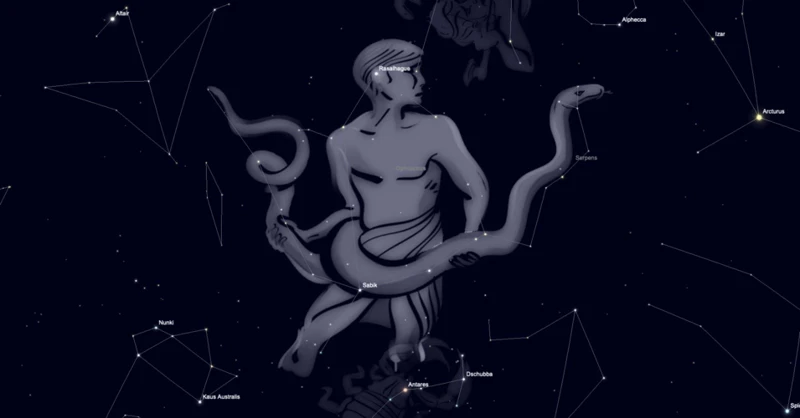
Persephone’s symbolism and importance in Greek mythology are multifaceted and resonate with various aspects of human existence. As the goddess of the seasons, she represents the cyclical nature of life and the ever-changing rhythms of the natural world. Her abduction and subsequent return symbolize the transitions between life and death, light and darkness, and the perpetual renewal of life. Persephone’s association with rebirth and transformation further emphasizes her significance, as she embodies the potential for growth and change, arising from even the most challenging circumstances. This symbolism extends beyond mythology, resonating with the human experience of overcoming adversity and embracing personal evolution. Persephone’s story serves as a reminder that even in the darkest depths, there is always the possibility for renewal and growth.
1. Goddess of the Seasons
As the myth of Persephone unfolds, we discover that she holds a significant role as the Goddess of the Seasons. This aspect of her character stems from her connection to both the world above and the Underworld. When Persephone is with her mother, Demeter, the Earth flourishes with bountiful harvests and vibrant life. This period represents spring and summer, characterized by warmth, growth, and abundance. However, during the months that Persephone spends in the Underworld with her husband, Hades, the Earth descends into a state of barrenness and coldness, symbolizing autumn and winter. This cyclical pattern of Persephone’s presence above and below ground mirrors the changing seasons on Earth. Her role as the Goddess of the Seasons emphasizes her power to bring forth life and fertility, but also her ability to withdraw it, demonstrating both the vitality and transience of nature. This connection to the changing seasons adds depth to Persephone’s character and highlights the importance of her presence in maintaining the balance and rhythm of the natural world. (Ophiuchus)
2. Association with Rebirth and Transformation
Persephone’s association with rebirth and transformation is a significant aspect of her mythological character. After being abducted by Hades and becoming the Queen of the Underworld, Persephone undergoes a profound transformation. Her time spent in the realm of the dead represents the dormant period of winter, where life seems to fade away. However, as Persephone emerges from the dark depths of the Underworld and returns to the surface, she brings with her the rebirth of nature and the arrival of spring. This cyclical pattern symbolizes the eternal cycle of life, death, and rebirth. Persephone’s transformation also highlights the transformative power she possesses. Her journey from innocence to maturity, from a maiden to a queen, mirrors the transformative experiences that individuals go through in their own lives. Just as Persephone emerges from the Underworld, we too can find strength and growth in our personal transformations. This association with rebirth and transformation makes Persephone a goddess of hope and renewal, a reminder that change can lead to greater possibilities and inner growth.
3. Connection to the Cycle of Life and Death
Persephone’s connection to the cycle of life and death is a central aspect of her mythology, highlighting her role as a powerful deity who governs the transitions between existence and non-existence. As the Queen of the Underworld, Persephone embodies the cyclical nature of life itself. Just as the seasons change and the earth experiences periods of growth and dormancy, Persephone’s story reflects the endless cycle of birth, growth, death, and rebirth. When Persephone descends into the Underworld each year to join her husband Hades, her absence marks the arrival of winter and the temporary halt of new life. This period of dormancy allows for rest, rejuvenation, and the preparation for the eventual return of spring. Similarly, when Persephone emerges from the Underworld and reunites with her mother Demeter, the world comes alive once again with the blooming of flowers, the emergence of new life, and the celebration of abundance. This connection to the cycle of life and death is not only reflected in the changing seasons but also represents the inevitable transitions that every living being experiences. Persephone symbolizes the transformative power of death and the potential for new beginnings that arise from the depths of darkness. Her journey serves as a reminder that life and death are interconnected, inseparable, and essential elements of the natural order. Through Persephone’s role as the mediator between the realms of the living and the dead, she invites us to embrace and understand the delicate balance between existence and non-existence, and to find comfort in the eternal cycle of life’s rhythms.
The Role of Persephone in Greek Mythology
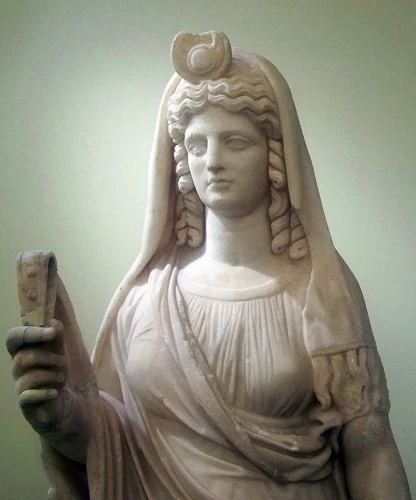
Within the rich tapestry of Greek mythology, Persephone occupies a prominent role. As the daughter of Demeter, the goddess of agriculture and fertility, Persephone’s story is intertwined with themes of growth and renewal. Her abduction by Hades and subsequent marriage to him solidified her position as the Queen of the Underworld, making her a central figure in the realm of death and the afterlife. This duality showcases Persephone’s significance as a bridge between the mortal world and the realm of the divine. Additionally, her annual return to the surface brings about the changing of seasons, exemplifying her connection to the natural cycle of life and marking her as the goddess of seasons. This multifaceted role demonstrates Persephone’s importance and influence in Greek mythology, shaping the understanding of life, death, and the interconnectedness of the divine and earthly realms.
1. Daughter of Demeter
– Persephone, the central figure in the myth, is known as the daughter of Demeter, the goddess of harvest and agriculture. As the child of one of the prominent Olympian gods, Persephone holds a significant position in Greek mythology. She embodies the qualities associated with her mother, such as fertility, abundance, and the nurturing aspects of nature. Persephone’s connection to Demeter underscores her role in the natural world and her ability to bring forth new life and growth.
– The bond between Persephone and Demeter is portrayed as strong and loving, with Demeter deeply devoted to her daughter. It is this love that drives Demeter to search frantically for Persephone after her abduction by Hades. The myth highlights the anguish and grief that Demeter experiences when her beloved daughter disappears, as she mourns the loss of her cherished child and the subsequent impact on the earth’s fertility.
– The relationship between Persephone and Demeter is often interpreted as symbolic of the cycle of the seasons. Persephone’s descent into the Underworld aligns with the barrenness and darkness of winter when growth and harvest are scarce. Her eventual return to the world above symbolizes the arrival of spring and the rejuvenation of nature. This connection between Persephone and the changing seasons further emphasizes her importance as the daughter of Demeter and the bringer of fertility and abundance to the earth.
– In some versions of the myth, Persephone’s role as Demeter’s daughter goes beyond her familial ties. She is also seen as an apprentice to her mother, learning the secrets and responsibilities of governing the earth’s bountiful harvest. This apprenticeship aspect underscores the passing down of knowledge and power from one generation to another, showcasing Persephone’s growth and maturation.
– Persephone’s identity as the daughter of Demeter showcases her close relationship with the natural world, her role in the cycle of seasons, and her potential for growth and transformation. Her connection to her mother not only defines her lineage but also defines her purpose and significance within Greek mythology.
2. Wife of Hades
As the myth unfolds, we learn that Persephone becomes the wife of Hades, the god of the Underworld. This union between Persephone and Hades is a significant aspect of her story, solidifying her position as the Queen of the Underworld. Despite the circumstances surrounding their marriage, Persephone displays resilience and adaptability in embracing her role as Hades’ wife. While some may view this as a forced union resulting from her abduction, others interpret it as a symbol of Persephone’s ability to find strength and purpose even in the darkest of situations. In Greek mythology, the role of a wife often carried both power and responsibility, and Persephone’s position as Hades’ wife amplifies her authority and influence over the realm of the Underworld. This marriage also underscores the complex dynamics between the gods and further highlights the interconnectedness of the Greek pantheon. The story of Persephone as the wife of Hades delves into themes of power dynamics, transformation, and the intricate relationships within Greek mythology, creating a rich tapestry of narratives and interpretations surrounding her role as Queen of the Underworld.
3. Queen of the Underworld
As the myth of Persephone unfolds, we discover her ultimate fate as the Queen of the Underworld. After being abducted by Hades, Persephone is forced to reside in the realm of the dead, ruling alongside her husband. This transformation from an innocent young goddess to a powerful queen showcases Persephone’s resilience and adaptability. As the Queen of the Underworld, she holds a position of authority and is responsible for overseeing the spirits of the deceased. Persephone’s role as the ruler of the Underworld grants her immense power and influence in both the mortal and immortal realms.
In her position as Queen, Persephone is not only responsible for governing the Underworld but also for bridging the connection between the living and the dead. She acts as a mediator, ensuring the proper transition of souls into the afterlife. Additionally, Persephone’s status as the Queen of the Underworld solidifies her role as a significant figure in Greek mythology. Her power and presence in the Underworld contribute to the intricate web of gods and goddesses that shape the Greek pantheon.
Persephone’s role as Queen of the Underworld represents her association with the cycle of life and death. Just as she experiences the duality of living with her mother Demeter in the mortal realm and residing in the Underworld, she embodies the cyclical nature of existence. This symbolism highlights the interconnectedness of life and death, emphasizing the inevitability of transitions and the perpetual cycle of renewal.
In art and literature, Persephone’s portrayal as the Queen of the Underworld has captured the imagination of many artists and writers throughout history. Her depiction often showcases her regal nature, with intricate robes, a crown, and a somber but powerful demeanor. Through various mediums, such as painting, sculpture, and poetry, Persephone’s role as Queen is captured, immortalizing her presence and significance in Greek mythology.
Persephone’s journey from an innocent maiden to the Queen of the Underworld draws us deeper into the complex tapestry of Greek mythology. Her transformation and the responsibilities she gains as the ruler of the dead solidify her importance within the pantheon. Whether through her role as a mediator between the living and the dead or as a symbol of the cycle of life and death, Persephone’s position as the Queen of the Underworld emphasizes her power, influence, and enduring legacy in Greek mythology.
Persephone in Art and Literature
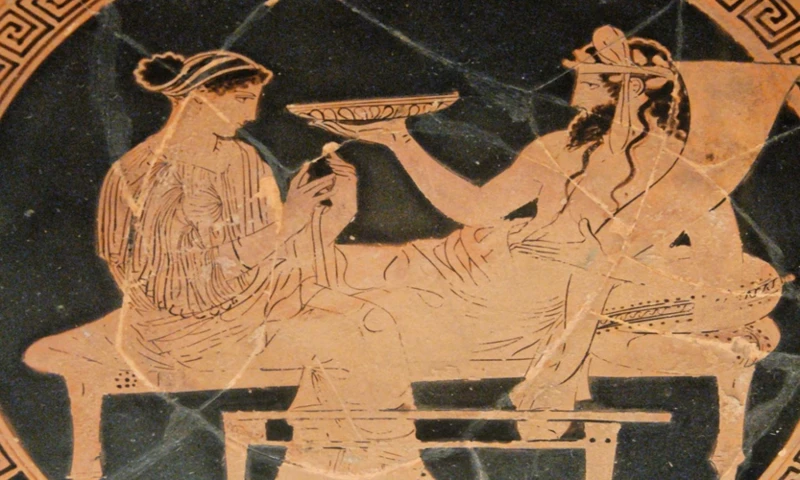
Persephone’s captivating story and symbolic significance have inspired countless artists and writers throughout history, leading to her prominent presence in the realms of art and literature. In art, Persephone is often depicted in various forms, symbolizing her dual nature as both the Queen of the Underworld and the goddess of rebirth and transformation. Her abduction by Hades is a common subject, with artists showcasing her despair and longing for freedom. The famous sculpture “The Rape of Persephone” by Gian Lorenzo Bernini captures the intensity of the moment, frozen in time.
Literature has also embraced Persephone’s tale, with authors drawing upon her mythological significance and exploring her character with depth and nuance. Persephone’s journey and transformation have inspired many retellings and reinterpretations, highlighting her strength and resilience. The acclaimed novel “The Goddesses and Gods of Old Europe” by Marija Gimbutas offers a comprehensive exploration of various myths, including Persephone’s story, shedding light on the cultural and spiritual significance of her character.
Persephone’s story has served as a metaphor in various literary works, symbolizing themes of growth, change, and womanhood. Writers have portrayed her as a figure who undergoes personal transformation and emerges stronger and wiser. The poetry collection “Persephone Falling” by Rita Dove beautifully dives into the complex emotions and experiences of Persephone, bringing her character to life through vivid imagery and lyrical language.
In both art and literature, Persephone’s presence is not only a homage to her mythological origins but also a reflection of the enduring themes and universal truths her story encompasses. Her journey continues to resonate with audiences, inviting exploration and interpretation through different artistic mediums.
Conclusion
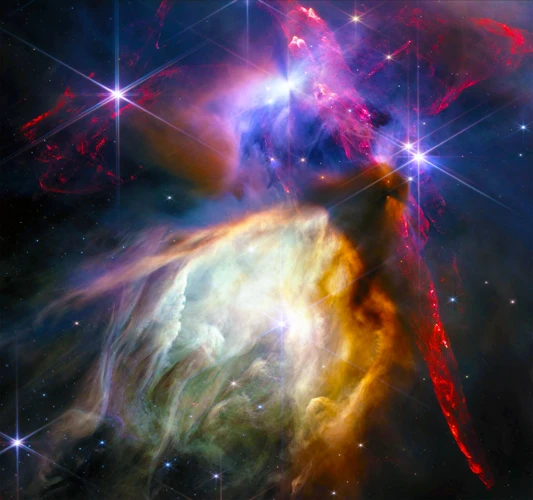
In conclusion, the myth of Persephone offers a profound understanding of the human experience and the world around us. Through her abduction, transformation, and subsequent reign as Queen of the Underworld, Persephone symbolizes the eternal cycle of life and death, the power of transformation, and the interconnectedness of all things. Her story serves as a reminder that even in the darkest of times, there is always hope for renewal and rebirth. Furthermore, the myth highlights the importance of embracing change and adapting to new circumstances, as Persephone did in her life in the Underworld. The enduring presence of Persephone in art, literature, and popular culture demonstrates her significance and lasting impact on our collective consciousness. By understanding and appreciating the symbolism and importance of Persephone, we gain a deeper insight into the complexities of life and the beauty that can arise from darkness. Discovering the depths of Persephone’s myth enriches our understanding of Greek mythology as a whole, while also shedding light on the universal themes that continue to resonate with us today.
Frequently Asked Questions
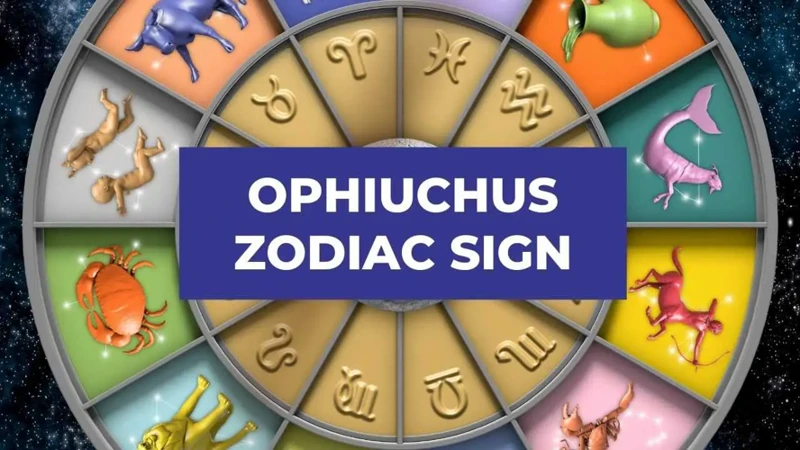
1. What is the significance of Persephone’s abduction in Greek mythology?
The abduction of Persephone signifies the transition from innocence to maturity, as she is taken from the realm of the living to the realm of the dead. It also represents the cyclical nature of life and the changing of seasons.
2. How did Persephone adapt to her life in the Underworld?
Persephone initially struggled with her new life in the Underworld but eventually embraced her role as Queen. She found purpose in overseeing the souls of the dead and became a respected figure in the realm of Hades.
3. What is the connection between Persephone and the cycle of life and death?
Persephone’s abduction and subsequent time in the Underworld symbolize the coming of winter and the dormancy of nature. Her return to the world above signifies the rebirth of life and the arrival of spring.
4. How is Persephone depicted in ancient artworks?
Ancient artworks often depict Persephone as a youthful and radiant goddess. She is frequently shown in a regal and elegant manner, symbolizing her role as the Queen of the Underworld.
5. What is the story behind Persephone’s relationship with Hades?
Hades, the ruler of the Underworld, fell in love with Persephone and abducted her to be his wife. While their relationship began with a forced union, Persephone eventually found a sense of purpose and autonomy within their union.
6. How does Persephone’s role as the goddess of seasons affect the natural world?
Persephone’s presence in the Underworld corresponds with the arrival of winter, signaling the suspension of growth and the barrenness of the land. When she returns to the world above, spring blossoms, and the cycle of life is renewed.
7. Is there any historical evidence of Persephone worship?
While there may not be direct historical evidence of Persephone worship, her myth and symbolism played a significant role in ancient Greek religious ceremonies and festivals, particularly those honoring the changing of seasons and fertility.
8. Are there any other versions of the Persephone myth?
Yes, there are variations of the Persephone myth across different regions and time periods. These variations may alter certain details but generally retain the core elements of abduction, transformation, and Persephone’s role as the Queen of the Underworld.
9. How does the myth of Persephone relate to the concept of rebirth and transformation?
Persephone’s time in the Underworld represents the cycle of death and rebirth. Her emergence from the Underworld each year signifies the rejuvenation of the natural world, highlighting the theme of transformation and renewal.
10. How does Persephone’s story inspire modern interpretations?
Persephone’s story continues to captivate and inspire artists, writers, and thinkers today. It serves as a metaphor for personal growth, resilience, and the potential for transformation even in the darkest of circumstances.
References
- Why was the Greek goddess Persephone considered …
- Persephone: Goddess of Spring and Queen of the …
- Persephone
Frequently Asked Questions

1. Who is Persephone in Greek mythology?
Persephone is a prominent figure in Greek mythology and the daughter of the goddess Demeter and the god Zeus. She is known as the Queen of the Underworld and the wife of Hades.
2. What is the myth of Persephone?
The myth of Persephone revolves around her abduction by Hades, the god of the Underworld, and her subsequent life in the Underworld. It also includes her eventual return to the surface world.
3. How was Persephone abducted?
Persephone was abducted by Hades while she was picking flowers in a meadow. He emerged from the Underworld and took her away to the realm of the dead against her will.
4. What happened to Persephone in the Underworld?
While in the Underworld, Persephone became the Queen of the Underworld and ruled alongside Hades. She had to spend a portion of each year in the realm of the dead, which explained the changing seasons.
5. What is the connection between Persephone and the seasons?
Persephone’s time in the Underworld is closely linked to the changing seasons. When she is in the Underworld, her mother Demeter, the goddess of agriculture, mourns her absence, causing the earth to become barren. When Persephone returns to the surface world, Demeter rejoices, and the earth becomes fertile again.
6. How is Persephone associated with rebirth and transformation?
Persephone’s time in the Underworld symbolizes death and rebirth. Her return to the surface world marks the beginning of spring and the renewal of life after the winter months. She represents the transformative power of nature.
7. What is the significance of Persephone’s role as the Queen of the Underworld?
As the Queen of the Underworld, Persephone holds power over the realm of the dead. She is seen as a mediator between the living and the dead, and her role highlights the cyclical nature of life and death.
8. How is Persephone depicted in art and literature?
Persephone is often depicted as a young woman with a regal demeanor. In art, she is often shown in scenes related to her abduction or as a symbol of the changing seasons. In literature, her story is frequently referenced to explore themes of loss, transformation, and the passage of time.
9. What other gods and goddesses are associated with Persephone?
Persephone’s most significant associations are with her mother Demeter, the goddess of agriculture, and her husband Hades, the god of the Underworld. She also has connections to other figures in Greek mythology, including Zeus, Hermes, and the goddess Hecate.
10. What lessons can be learned from the myth of Persephone?
The myth of Persephone teaches us about the cyclical nature of life, the seasons, and the important role of nature in our world. It also highlights the themes of empowerment, transformation, and the strength of familial love in the face of adversity.
References
- Why was the Greek goddess Persephone considered …
- Persephone: Goddess of Spring and Queen of the …
- PERSEPHONE – Greek Goddess of Spring, Queen …






